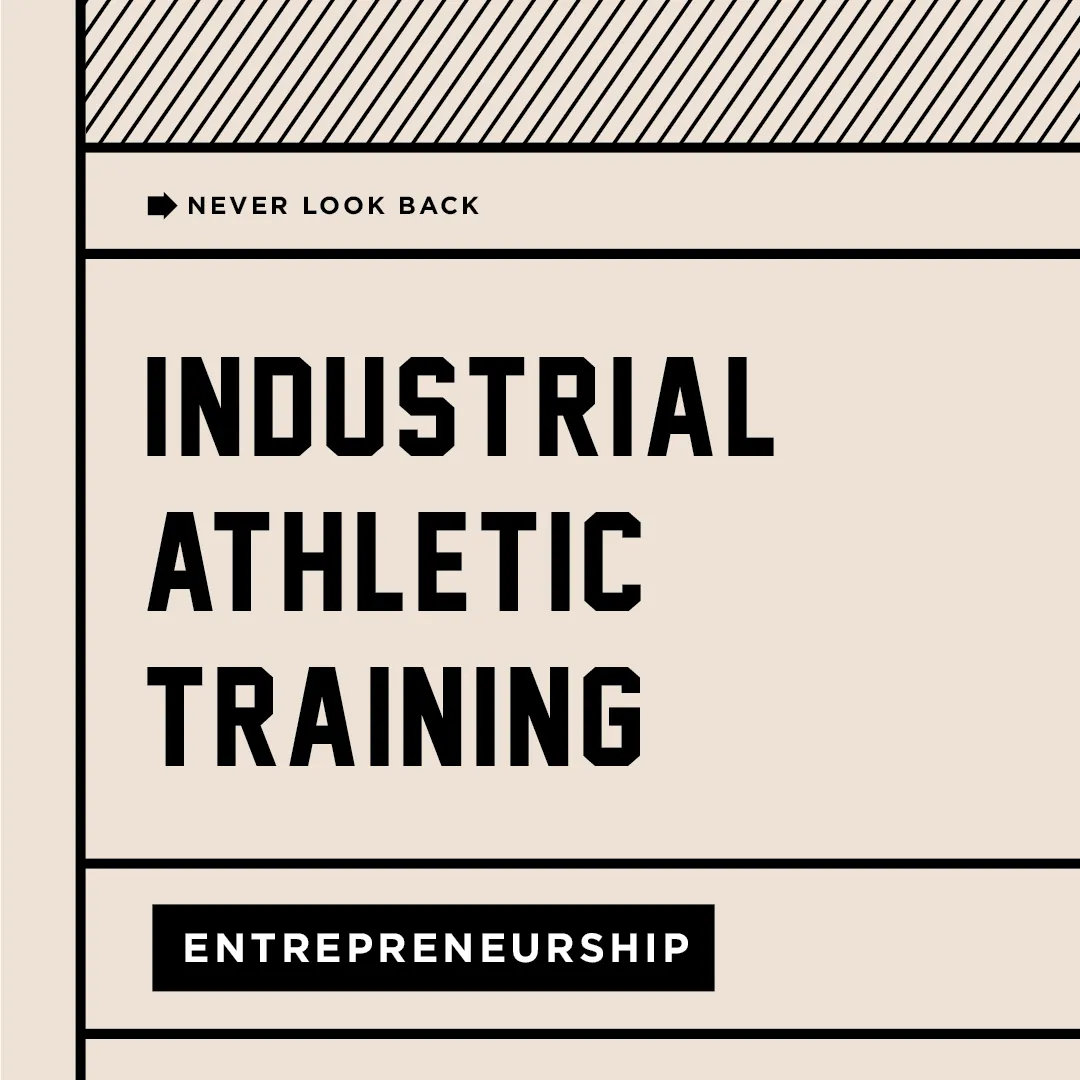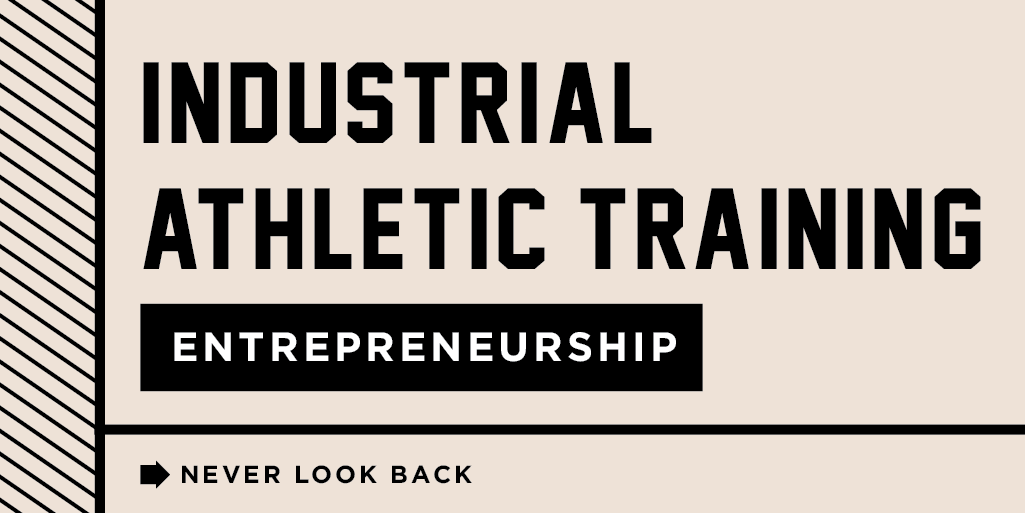Entrepreneurship for the Industrial AT


As the athletic training profession continues to grow and more organizations learn about the services they provide, opportunities can seemingly multiply overnight. But, beyond conventional employment is a category of work that few athletic trainers jump into. Entrepreneurship. The ability to work for ourselves can be the ultimate freedom for athletic trainers. It’s why platforms like Go4 are continuing to see rapid growth. The industrial setting is no different and I recently had the opportunity to chat with a fellow industrial AT who struck out on her own, Jillian Nicholson.
Jill was introduced to athletic training in a way that many of us will find familiar. As a member of her high school track team, she spent a lot of time with the athletic trainer at her school. Her AT became a mentor which lead earring a bachelor’s degree in athletic training from Northern Michigan University.
Incredibly enough, upon completion of her degree, athletic training positions were few and far between. That’s how she ended up as a physician extender for a physical medicine & rehab doctor. Like many healthcare providers in the clinic setting, Jill found herself on the reactive end of medicine.
“I guess what I saw… was people that had had, just a rough life… and I could only make minimal improvements for them. And the more I worked in that realm, I figured that there had to be a way to get to these people sooner, there had to be a way to help them before it got this bad.”
So, In 2012 she left that position and became the first athletic trainer to do onsite industrial rehab at the Harley Davidson manufacturing plant in Northern Wisconsin.
“From that point I never looked back. I really enjoyed the setting. I really enjoyed getting to work with people more at their job sites.”
When COVID came along and her employer announced that the company was being sold, she looked at the continuing education she had done in ergonomics and started asking questions about what things she could do with or without a referral and what it would take to start a business. Ever wondered how long it takes to research opening an AT business? For Jill it was 8 months.
“It’s so crazy because I’m so new into this myself but, obviously if you know what you can do in your state… that’s the biggest thing you have to understand what your state allows you to do.”
Jill stresses the importance of joining small business groups in your state to ask questions and using your state athletic trainers’ association as a resource, like she did with the Wisconsin Athletic Trainers’ Association. After a few months of being on the fence, it was a visit to shadow a self-employed colleague of hers for a couple days that put her over the edge. When she got back home, she put in her notice at work and filed for her LLC. When her employer got bought out, they dropped a lot of their smaller industrial contracts that they had, and Jill was able to reach out to them to get those employees help again. She works in a project-based capacity, focusing on macro ergonomic improvements for workers.
One thing Jill stresses for ATs considering striking out on their own is to be ready to learn. Without an established corporation’s resources, entrepreneurial ATs need to be constantly inquisitive. Work is a learning curve when you work for yourself and everything from marketing yourself to creating a report is an educational experience.
But the perks of being self-employed can’t be ignored. Being able to set her own schedule is great. Jill warns against being too limiting in the industrial setting, though. “You have to meet the company where they’re at, and what their needs are.” She often hears ATs talk about how the industrial setting is 9-5 and while she agrees that the schedules are often an improvement from sports, she emphasizes that if a plant has a shift change at 5 or 6 am, you should be there for those employees at that shift change. She also advises even larger companies who employ industrial ATs to find better ways to staff their ATs to meet the needs of those employees.
For most ATs working as an employee is still the best answer and her advice to those ATs is no different than for ATs at the sports level, “You have to be a part of the family.” Being able to connect with the employer you’re contracted to, build camaraderie with the employees, and be included in everything that goes on at work.
When it comes to networking for ATs, meeting other great industrial ATs can be hard. Jill met some contacts through the Industrial ATs Across America Facebook group which is how she made a self-employed AT friend and was able to trade information during her path to starting her own business. She has also met ergonomists or safety professionals who were ATs in the past through networking in the industrial setting. Jill admits that she “doesn’t know what the answer is,” but notes that “it’s not going to your state and your regional athletic training meetings. Those are unfortunately not… good ways to meet some.” We agree that the industrial athletic training setting has grown and continues to grow which will make networking easier, especially with advancements in technology.
If you’re new to industrial athletic training or even just thinking about starting your own business as an AT, Jillian Nicholson has successfully gone through the process very recently so feel free to network with her on LinkedIn or in the Industrial AT Facebook group where she got some of her best advice.
CREATE YOUR Go4 ACCOUNT
Are you an Athletic Trainer?
Join us!
From per diem shifts to full-time opportunities, AT resources, PLI, a free EMR and more, Go4 is the essential AT app. Sign up now!
"*" indicates required fields
Other articles you might like

What is the deal with Standing Orders?
How do I get standing orders as an athletic trainer? Q: What are standing orders? A: Standing orders, aka medical protocols, establish the scope of practice for an athletic trainer. Under the direction of a physician, they are an overview of the specific skills that the AT is legally able…

AT Spotlight: Thomas Obergefell, Athletic Training from the Dugout
Name: Thomas Obergefell, MS, ATC, LAT Nickname: T.J. Alma…

Middle School / High School / College / Any School EMR: The Importance of Documentation
Go4’s in-app Electronic Medical Record We all know the reasons why it’s important to thoroughly document, but incase you forgot, here they are:…